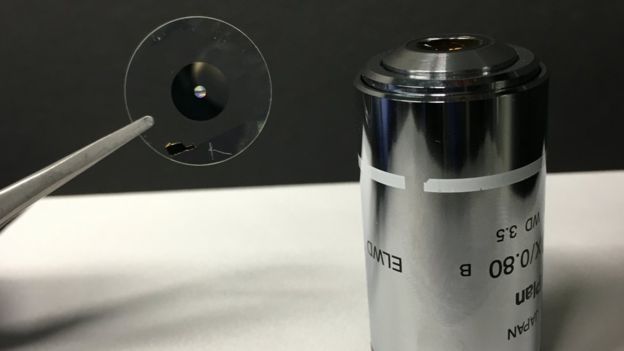Optics revolution: flat, powerful camera lens can make phones even thinner

The new flat metalens compared to a traditional objective
It's not every day that we are hearing about revolutionary ways to send lights to a modern digital camera sensor - the molded glass lens has been the only way to do it since the 19th century, after all - so this breakthrough planar optics discovery might hold the key to the future of photography. In short, the light rays that fall on the millions of hair-like structures, get refocused by them when passing through the quartz surface, and it is only a matter of algorithms to find the optimal distribution of directing it like traditional lenses for various purposes.
In fact, as per the team lead Prof Capasso, not only does this metalens avoid the distortions and aberrations that come with traditional glass optics, but also "the quality of our images is actually better than with a state-of-the-art objective lens." The researchers measured a focal point that is 30% sharper than even the best conventional objectives. What caught our attention in the publication abstract, however, is this phrase: "At just a fraction of the size of optical objectives, such planar devices could turn your phone camera or your contact lens into a compound microscope."
While this is all very nice and dandy, often such discoveries are prohibitively expensive to manufacture, and this is where the planar metalens shines. The titanium oxide we mentioned previously is simply the good old paint whitener, and the flat lens can be produced in mass quantities in a chip foundry with whatever sizes you desire. The lens optics are currently the only major traditional camera element in a digital era, and this new planar structure may revolutionize it towards something completely new, more capable and way more compact to fit in the phones and VR gadgets of tomorrow. Here is a video of how the light passing through the TiO fins gets refocused on the way out in a lens that can be made thinner than a sheet of paper.

source: Harvard













Things that are NOT allowed: